decentralised finance
description: the use of blockchain and cryptocurrency technologies to create financial systems that operate without central authorities
22 results
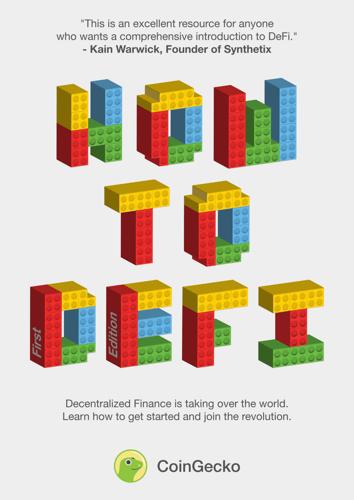
How to DeFi
by
Coingecko
,
Darren Lau
,
Sze Jin Teh
,
Kristian Kho
,
Erina Azmi
,
Tm Lee
and
Bobby Ong
Published 22 Mar 2020
A Framework for Classifying Lending Protocols (Kyle Kistner) https://hackernoon.com/how-decentralized-is-defi-a-framework-for-classifying-lending-protocols-90981f2c007f How Decentralized is “Decentralized Finance”? (Aaron Hay) https://medium.com/coinmonks/how-decentralized-is-decentralized-finance-89aea3070e8f Mapping Decentralized Finance https://outlierventures.io/wp-content/uploads/2019/06/Mapping-Decentralised-Finance-DeFi-report.pdf Market Report: 2019 DeFi Year in Review https://defirate.com/market-report-2019/ DeFi #3 – 2020: The Borderless State of DeFi https://research.binance.com/analysis/2020-borderless-state-of-defi Decentralized Finance with Tom Schmidt (Software Engineering Daily) https://softwareengineeringdaily.com/2020/02/25/decentralized-finance-with-tom-schmidt/ Part Two: Getting Into DeFi Chapter Three: The Decentralized Layer: Ethereum What is Ethereum?
…
Retrieved February 20, 2020, from https://www.ncbi.nlm.nih.gov/pmc/articles/PMC4358152/ Stably. (2019, September 20). Decentralized Finance vs. Traditional Finance: What You Need To Know. Retrieved from https://medium.com/stably-blog/decentralized-finance-vs-traditional-finance-what-you-need-to-know-3b57aed7a0c2 ~ Chapter 2: What is Decentralized Finance (DeFi)? Campbell, L. (2020, January 6). DeFi Market Report for 2019 - Summary of DeFi Growth in 2019. Retrieved from https://defirate.com/market-report-2019/ Mitra, R. (n.d.). DeFi Use cases: The Best Examples of Decentralised Finance. Retrieved from https://blockgeeks.com/guides/defi-use-cases-the-best-examples-of-decentralised-finance/#_Tool_2_DeFi_Derivatives Shawdagor, J. (2020, February 23).
…
~ Recommended Readings Decentralized Finance vs Traditional Finance: What You Need To Know (Stably) https://medium.com/stably-blog/decentralized-finance-vs-traditional-finance-what-you-need-to-know-3b57aed7a0c2 The 7 Major Flaws of the Global Financial System (Jeff Desjardins) https://www.visualcapitalist.com/7-major-flaws-global-financial-system Decentralized Finance: An Emerging Alternative to the Global Financial System (Frank Cardona) https://www.visualcapitalist.com/decentralized-finance/ How Decentralized Finance Could Make Investing More Accessible (Jeff Desjardins) https://www.visualcapitalist.com/how-decentralized-finance-could-make-investing-more-accessible/ Chapter Two: What is Decentralized Finance (DeFi)? Decentralized Finance or DeFi is the movement that allows users to utilize financial services such as borrowing, lending, and trading without the need to rely on centralized entities.

Cloudmoney: Cash, Cards, Crypto, and the War for Our Wallets
by
Brett Scott
Published 4 Jul 2022
If cloudmoney is digital money in mega-data centres, then blockchain innovators imagine themselves flattening the cloud to create a digital money infrastructure administered in a more distributed form. That vision is partially fantasy, because the greatest hope for the Ethereum (and other crypto) communities lies in stablecoins, which remain tethered to, or pegged to, the normal monetary system. Stablecoins are now being used to build so-called ‘DeFi’, or ‘decentralised finance’, platforms. Much in the way ordinary fintech companies rely upon digital bank money, DeFi involves setting up smart contract systems that will administer, lend or route digital stablecoins, and thereby replicate – in a more decentralised form – the same processes of financial automation that mainstream fintech promotes.
…
, 49, 72 ‘Cashfree and Proud’, 40 Cashless Catalyst, 127–8 Cashless Challenge, 40 cashless society, 2, 5, 10, 15, 38, 64, 81, 83, 84, 251 inevitability, 10–12, 121–33, 260–61 Cashless Way, 37 casinos, 66–9, 70–71, 83, 236 categorisation, 109, 113–14, 162, 167 Catholicism, 131, 212 Cayman Islands, 111 censorship, 33, 116–18, 250 central banks, 36, 42–5, 51, 84, 254 data surveillance, 115 digital currencies (CBDC), 242–5, 254, 255 international transfers, 79 transfers, 73–4 centralisation of power, 15, 180–83 centralised–decentralised model, 136 Chama, 130 charging up, 22–5 chatbots, 146–8 Chaum, David, 106–7, 117, 183 cheques, 89 Chicago Mercantile Exchange, 158 China, 2, 7, 18, 33, 74–5, 79, 114–15, 254 CBDC plans, 245, 254–5 facial recognition in, 150 leviathan complex, 178 People’s Bank of China, 79, 242 Social Credit System, 115, 245 choice, 124–6, 251 Christianity, 154, 175–6, 212 Christl, Wolfie, 109 cigarettes, 181 Circles, 260 Citigroup, 1, 37, 109, 132, 150, 227 City of London, 6, 135 class, see social class Cleo, 146 climate change, 226 cloakrooms, 66–9, 70–71 cloud, 30 cloudmoney, 82 Coca-Cola, 31, 131 cocaine, 98 code is law, 223, 224 Coinbase, 233 collateralised debt obligations, 26 colonialism, 55, 97, 175–6, 178, 239 Commerzbank Tower, Frankfurt, 18–20, 143, 156 computer boys, 158 conductivity, 179, 249 ConsenSys, 229 conservatism, 7, 131, 155, 184, 192–3, 211 see also right-wing politics consortium blockchains, 231, 233 conspiracy theories, 261–2 constitutional monarchies, 56 consumers, 25 contactless payments, 13, 31, 37–8, 91, 125, 127 core, 28 corporate personhood, 147 Corruption Perceptions Index, 43 counterfeiting, 60–61 countertradability, 209–10, 213, 256–7 Covid-19 pandemic, 2, 10, 16, 34, 36, 181, 249, 254 ATM use, 36 cash and, 2, 34, 40–41, 249, 261 conspiracy theories, 261 Cracked Labs, 109 credit cards, 39, 91, 109 credit creation of bank-money, 70, 72 credit default swap market, 232 credit expansion, 168–9 credit ratings, 17, 114, 160, 162–3, 167, 168, 170 crime cash and, 36, 42–3, 45, 81, 112 cybercrime, 32 financial crime, 111–12 marijuana industry, 102 trust and, 93 Crypto Sex Toys, 13 crypto-anarchists, 183 Cryptocannabis Salon, 101–2 cryptocurrencies, 13–15, 16, 101–2, 103, 184–5, 187–246, 254–60 alt-coins, 217–18 as commodity, 206–10, 213–14, 217, 246, 256 countertradability, 209–10, 213, 256–7 decentralisation and, 14, 15, 189–94, 196, 230, 234, 255, 258 forks, 214, 217 millenarianism and, 212, 213 mutual credit systems and, 260 oligopolies and, 229–33, 246 politics and, 191–3, 211–12, 215–17, 225–6 smart contracts, 220–24, 258 stablecoins, 233–41, 245–6, 255 Currency Conference (2017), 60 Curse of Cash, The (Rogoff), 93 Cyber Monday, 86 cyberattacks, 32, 48 cybercrime, 34 cyberpunk genre, 10 cypherpunk movement, 106, 183–5, 216–17 Dahabshiil, 116 DAI, 235 dark market, 216–17, 259 Dark Wallet, 216 data, 2, 8, 10, 33, 39, 104–19, 156–72 AI analysis, 108, 153–72 banking sector and, 108–9 Big Brother and, 113–15 categorisation, 109, 113–14, 162 panopticon effect and, 118–19, 172 payments censorship and, 116–18 predictive systems and, 105 states and, 110–12, 114–15 Data Bank Society, The (Warner), 106 data centres, 3, 4, 5, 30, 32, 34, 35, 47, 73, 76–7, 149 Davos, Switzerland, 11 debit cards, 39 Decathlon, 40–41 decentralisation, 14, 15, 189–94, 196, 230, 234, 255, 258–60 decentralised autonomous organisations (DAOs), 221–4, 258 DECODE, 236 DeepMind, 8 DeFi (decentralised finance), 258 Delft University of Technology, 31 demand, 29 demonetisations, 43, 44, 93 deposits, 66–7, 69 derivatives, 6, 18, 21, 26, 27, 160 Desparte, Dante, 238 Diamond, Robert ‘Bob’, 38 Diem, 241, 244 DigiCash, 106, 183 digital footprint, 169 disruption, 8, 9, 14, 32, 140–43 distributed ledger technology (DLT), 229–46, 258 Dogecoin, 13, 218 dollar system, 80, 182, 210, 233–6, 239, 240 double spending, 182, 194 doublethink, 143 Dow Chemical, 24 Drakensberg Mountains, 3–4 Dridex, 32 drones, 11 drug dealers, 96 Dubai, United Arab Emirates, 248 Dylan, Robert ‘Bob’, 90 e-commerce, 40, 77 East India Company, 178 eBay, 109, 113 ecological activism, 7 economic syncretism, 175–6 Ecuador, 240 Egypt, 116 El Salvador, 98, 208 elderly people, 126 electricity, 247 Elwartowski, Chad, 216 Emili, Geronimo, 37 employees, 25 enclosure, 86 Enlightenment (c. 1637–1789), 252 enterprise blockchains, 231 Enterprise Ethereum Alliance, 233 entrepreneurs, 1, 15, 129, 155 equivocation fallacies, 85 Erica, 147 Ethereum, 219–24, 257–8 Ethereum Classic, 224 European Union, 14, 37, 42, 254 Central Bank, 51, 74, 79, 242 DECODE project, 236 Eurozone, 51, 74, 79 Evans, Mel, 144 exiting, 39, 48, 61, 63, 68, 83 Experian, 163 F-16 fighter jets, 153 Facebook, 7, 38, 105, 150, 166, 198, 255, 262 Libra, 236–41, 245 Messenger, 237 facial recognition, 10, 138, 150, 181, 245 far-left politics, 7, 215 far-right politics, 7, 14, 215, 225–6, 261–2 fascism, 7, 14, 226 Federal Bureau of Investigation (FBI), 111 Federal Reserve, 32, 35, 36, 234, 242 federated frontline, 136–8, 147 fees, 39, 57, 91, 94 feminism, 226 fiat money, 51–2, 56, 192, 193 Fidor, 142 Financial Crimes Enforcement Network, 111 financial crisis (2008), 6, 8, 17–18, 26–7, 96, 184, 232, 248 financial inclusion, 37, 39, 93–9, 130–32, 167, 238, 262 fingerprints, 150 Fink, Stanley, 38 fintech, 8, 41–2, 140–43 first-world problems, 154 fitness centres, 17 fixed money supplies, 191–3 Floored (2009 film), 158 Florentine Republic (1115–1569), 135, 159 Follow the Money, 112 Fourth Industrial Revolution, 11 fractional reserve banking, 70 France cashless payments strategy, 43 Frankfurt, Germany, 18–20, 143, 156, 248 frogs, slow-boiling, 104 futurism, 1, 12, 86, 122–3, 250, 252 gambling, 105 game theory, 220 Gap, 131 Gates, William ‘Bill’, 44–5, 261–2 GCHQ, 112 Generation Z, 86, 140 gentrification, 128–33 Germany, 7, 18 Bundesbank, 35, 47 cash thresholds, 42–3 Corruption Perceptions Index, 43 Frankfurt, 18–20, 143, 156 honesty boxes in, 91 get-rich-quick investments, 26 Getty Images, 80 giant parable, 52–6, 63–4, 188 global matrix, 12 Gmail, 203 gold, 192–3, 207, 214 Goldman Sachs, 38, 150, 157, 158, 230 Golumbia, David, 225 Google, 2, 5, 7, 262 Cashe, 150 data, 105, 108 DeepMind, 8 Gmail, 203 Maps, 4 Mastercard deal, 109 Pay, 1, 78, 125 Singularity University, 153–6, 252–3 Trends, 84 USAID and, 128, 178 Grassroots Economics, 260 Greece, 42, 43, 62, 131 Green Dot, 150 Greenpeace, 116 growth, 123, 126–7, 249 hackers, 6–7, 101, 184 Hacktivist Village, 101 Halkbank, 131 Handmaid’s Tale, The (Atwood), 117 Hansen, Tyler, 101–2 Harvard University, 47, 93 hawala systems, 179 ‘Here Today.
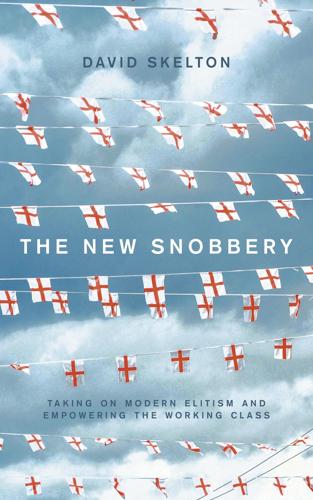
The New Snobbery
by
David Skelton
Published 28 Jun 2021
The decline of building societies and the rise of a centralised financialisation meant that the City of London became stronger; post-industrial towns lost assets and access to finance; and the economy became more short-termist and focused on the whims of the financial sector. A network of local banks, only allowed to lend in their local area and encouraged to lend to manufacturing in particular, would be a key way of decentralising finance. If it was funded by a levy on those banks that benefited from the bank bailout, it would also represent the kind of change that should have been achieved after 2008. The sheer dominance of the City of London has created a drain of talent towards the capital, but it has also meant that the City is ‘the only game in town’ when it comes to finance.

12 Bytes: How We Got Here. Where We Might Go Next
by
Jeanette Winterson
Published 15 Mar 2021
My-wi might leave us as little children are: cared for, fed, safe, watched over, with plenty of fun stuff and free stuff, and with someone else deciding the big stuff. No reason to believe that who decides will always be in human form. AUTHOR’S P. S. On 22 May 2021 I read in the Financial Times that the next big thing for blockchain and cryptocurrencies will be DeFi – standing for decentralised finance – how to bypass intermediaries in financial services transactions. You might want to do this if you are breeding or selling digitally created racehorses (NFTs) … Recently one such horse sold for $125,000. These horses don’t need feeding – but you can race them, bet on them, and yes, breed them using algorithms.

You've Been Played: How Corporations, Governments, and Schools Use Games to Control Us All
by
Adrian Hon
Published 14 Sep 2022
You should not be here to gain experience points, create your own reality, play mind games with others, or engage in satisfying your taste for single combat.”91 Yet though the burden is on us to remember the world isn’t a game, frequent-flyer programs, Chartbeat, Robinhood, Reddit, Facebook, Twitter, and now cryptocurrencies, NFTs, and decentralised finance (DeFi) platforms are trying their damnedest to convince us otherwise. In an interview with The Information, Raj Gokal, chief operating officer of Solana, a DeFi company that raised $314 million in 2021, made the comparison explicit: “I think what happened in the last year is that the traditional capital markets for large enterprises started to look like games, too.

Stake Hodler Capitalism: Blockchain and DeFi
by
Amr Hazem Wahba Metwaly
Published 21 Mar 2021
In the "Stake Hodler Capitalism" book series, we will delve deeper into why I and many others have been fascinated to the point of obsession with Blockchain, cryptocurrencies, and decentralized finance. Chapter 1: DeFi Apps: The Ultimate Killer Apps in Blockchain Whether you have heard about the DeFi (Decentralized Finance) hype or you haven't heard about it, it already started being directly a part of our day-to-day lives. Throughout this chapter, we will break the components of DeFi into smaller, easily digestible subparts. What Is DeFi? DeFi or decentralized finance is a movement started by different researchers to create a new and open-source financial system that anyone can access without requiring trusted intermediaries or central authorities such as banks, brokerages, or exchanges.
…
Stake Hodler Capitalism: Blockchain and DeFi (Decentralized Finance) Table of Contents Stake Hodler Capitalism: Blockchain and DeFi (Decentralized Finance) Disclaimer Introduction Author's Note Chapter 1: DeFi Apps: The Ultimate Killer Apps in Blockchain What Is DeFi? Cryptography Chapter 2: Blockchain Storage structure Decentralization Transparency How secure is blockchain? Bitcoin vs. Blockchain Ways Blockchains Are Implemented Banking and finance Currency Health care Records of property Supply chains Pros and Cons of Blockchain Blockchain Advantages Disadvantages of Blockchain Chapter 3: Introduction to Smart Contracts The Operation Process of a Smart Contract How can you use smart contracts?
…
They regularly move crypto coins between different lending markets to maximize profits. They will also be very secretive about the best farming strategies they use. Why? The more they reveal their strategy, the less effective it gets. Yield farming is the forest plots of land Decentralized Finance (DeFi), where farmers engage in competition to grow the best crops. The DeFi (Decentralized Finance) movement has been at the forefront of blockchain innovation. What makes the dApps so special? They are not authorized, so anyone with an internet connection and a secondary wallet can interact with them. Also, dApps eliminate the need for custodians or brokers.
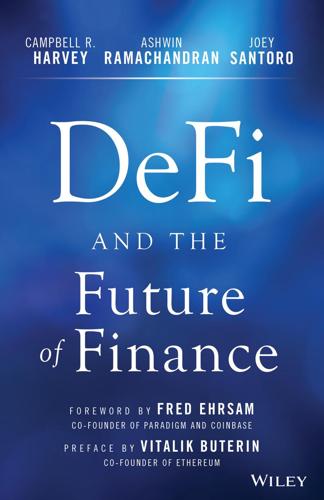
DeFi and the Future of Finance
by
Campbell R. Harvey
,
Ashwin Ramachandran
,
Joey Santoro
,
Vitalik Buterin
and
Fred Ehrsam
Published 23 Aug 2021
These implications are far-reaching, and, by any calculations, this is a long list of serious problems endemic to our current system of centralized finance. Our financial infrastructure has failed to fully adapt to the digital era in which we are living. Decentralized finance offers new opportunities. The technology is nascent, but the upside is potentially transformational. Our book has multiple goals. First, we identify the weaknesses in the current system, including discussion of some early initiatives that challenged the business models of centralized finance. Next, we explore the origins of decentralized finance. We then discuss a critical component of DeFi: blockchain technology. Next, we detail the solutions DeFi offers and couple this with a deep dive on some leading ideas in this emerging space.
…
Table of Contents COVER TITLE PAGE COPYRIGHT FOREWORD PREFACE I INTRODUCTION FIVE KEY PROBLEMS OF CENTRALIZED FINANCIAL SYSTEMS IMPLICATIONS NOTES II THE ORIGINS OF MODERN DECENTRALIZED FINANCE A BRIEF HISTORY OF FINANCE FINTECH BITCOIN AND CRYPTOCURRENCY ETHEREUM AND DeFi NOTES III DeFi INFRASTRUCTURE BLOCKCHAIN CRYPTOCURRENCY THE SMART CONTRACT PLATFORM ORACLES STABLECOINS DECENTRALIZED APPLICATIONS NOTES IV DeFi PRIMITIVES TRANSACTIONS FUNGIBLE TOKENS NON-FUNGIBLE TOKENS CUSTODY SUPPLY ADJUSTMENT INCENTIVES SWAP COLLATERALIZED LOANS FLASH (UNCOLLATERALIZED) LOANS NOTES V PROBLEMS DeFi SOLVES INEFFICIENCY LIMITED ACCESS OPACITY CENTRALIZED CONTROL LACK OF INTEROPERABILITY VI DeFi DEEP DIVE CREDIT/LENDING DECENTRALIZED EXCHANGE DERIVATIVES TOKENIZATION NOTES VII RISKS SMART CONTRACT RISK GOVERNANCE RISK ORACLE RISK SCALING RISK DEX RISK CUSTODIAL RISK ENVIRONMENTAL RISK REGULATORY RISK NOTES VIII CONCLUSIONS: LOSERS AND WINNERS NOTE ACKNOWLEDGMENT REFERENCES GLOSSARY INDEX End User License Agreement List of Tables Chapter 6 Table 6.1 The Problems That MakerDAO Solves Table 6.2 Problems That Compound Solves Table 6.3 Problems That Aave Solves Table 6.4 Problems That Uniswap Solves Table 6.5 Problems That the Yield Protocol Solves Table 6.6 Problems That dYdX Solves Table 6.7 Problems That Synthetix Solves Table 6.8 Problems That Set Protocol Solves List of Illustrations Chapter 2 Figure 2.1 Western Union transfer from 1873 Figure 2.2 Iraqi Swiss dinars and new dinars Chapter 4 Figure 4.1 Linear bonding curve Figure 4.2 Superlinear bonding curve Figure 4.3 Logistic/sigmoid bonding curve Figure 4.4 Different bonding curves for purchases and sales Figure 4.5 The mechanics of automated market makers Chapter 6 Figure 6.1 The Mechanics of MakerDAO's DAI Figure 6.2 Collateralization Ratios in Compound Figure 6.3 Savings and Lending Rates in Compound Figure 6.4 The Mechanics of Compound's Equity Token (cToken) Figure 6.5 The Mechanics of an Aave Flash Loan Figure 6.6 The Mechanics of a Uniswap Automated Market Maker Figure 6.7 The Mechanics of a Flash Swap in Uniswap Figure 6.8 The Mechanics of Fixed-Rate Borrowing in the Yield Protocol Figure 6.9 The Mechanics of Arbitrage with dYdX Figure 6.10 Perpetual Futures with dYdX Figure 6.11 The Mechanics of Synthetix DeFi and the FUTURE of FINANCE Campbell R.
…
For more information about Wiley products, visit www.wiley.com. Library of Congress Cataloging-in-Publication Data is Available: ISBN 9781119836018 (Hardcover) ISBN 9781119836032 (ePDF) ISBN 9781119836025 (ePub) COVER DESIGN: PAUL MCCARTHY COVER IMAGES: GETTY IMAGES: © TUOMAS LEHTINEN FOREWORD DeFi is a cute acronym for “decentralized finance,” but it obfuscates its true potential: a new financial system built from the ground up. While DeFi is small today—containing, as of this writing, tens of billions of dollars in assets relative to the hundreds of trillions in the traditional financial system—it is growing rapidly. And while its rise will take decades, I believe DeFi will be the primary financial system of the world.
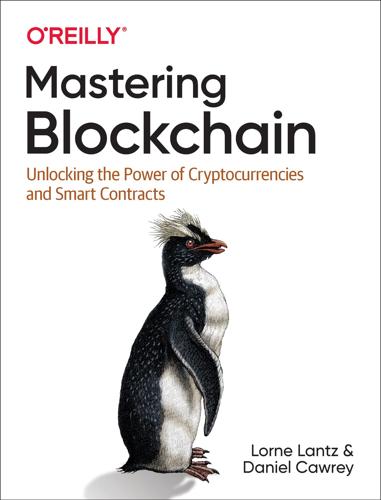
Mastering Blockchain: Unlocking the Power of Cryptocurrencies and Smart Contracts
by
Lorne Lantz
and
Daniel Cawrey
Published 8 Dec 2020
The drawback is that using these names can allow analytics to track transactions on the blockchain, which risks revealing identity information. Decentralizing Finance The ecosystem of financial services without intermediaries is growing quickly. This is a fascinating area of blockchain that is attracting a lot of attention from developers, and a number of platforms are now working to provide decentralized finance. DeFi services use smart contracts, cryptocurrency, and blockchain to replace some of the services that banking has traditionally provided. Figure 7-2 illustrates. Figure 7-2. Traditional versus decentralized finance DeFi has a lot of moving parts, many of which rely on Ethereum and ERC-20 assets.
…
Market Infrastructure Evolution of the Price of Bitcoin The Role of Exchanges Order Books Slippage Depth Charts Jurisdiction Wash Trading Whales Derivatives Cryptocurrency Market Structure Arbitrage Counterparty Risk Market Data Analysis Fundamental Cryptocurrency Analysis Technical Cryptocurrency Analysis Arbitrage Trading Timing and Managing Float Float Configuration 1 Float Configuration 2 Float Configuration 3 Regulatory Challenges Banking Risk Exchange Risk Basic Mistakes Exchange APIs and Trading Bots Open Source Trading Tech Rate Limiting REST Versus WebSocket Testing in a Sandbox Market Aggregators Summary 7. Decentralizing Finance and the Web Redistribution of Trust Identity and the Dangers of Hacking Wallets Private Keys Naming Services Decentralizing Finance Important Definitions Stablecoins DeFi Services Lending Savings Derivatives Decentralized Exchanges Decentralized Versus Centralized Exchanges Flash Loans Creating a Flash Loan Contract Deploying the Contract Executing a Flash Loan Flash Loans for Arbitrage The Fulcrum Exploit Privacy Zero-Knowledge Proof Zcash Ring Signatures Web 3.0 Summary 8.
…
Still, the information covered in this chapter should help developers and traders alike with lots of ideas on how to get started. Chapter 7. Decentralizing Finance and the Web The growing popularity of cryptocurrency, blockchain, and smart contracts has ushered in a number of new use cases that provide specialized functionality, from increased privacy to the creation of a stable payments system to entirely new types of blockchain-based applications. This chapter explores the exciting possibilities being revealed in the realms of decentralized finance (DeFi) and decentralized apps (dapps). Redistribution of Trust Although they are trying to innovate, banks today are still slow and expensive.
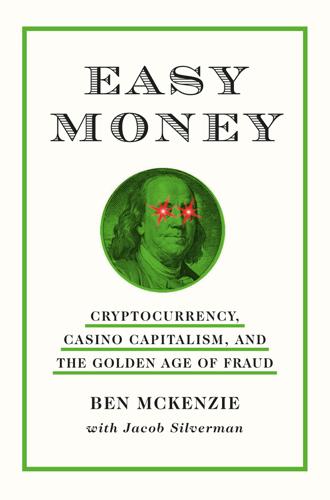
Easy Money: Cryptocurrency, Casino Capitalism, and the Golden Age of Fraud
by
Ben McKenzie
and
Jacob Silverman
Published 17 Jul 2023
This would let the contract act as something like an escrow agent, with a critical difference: The escrow agent never has to actually hold the money. (That’s the idea anyway; in practice these “contracts” often run into problems, both practically and legally.) Regardless, smart contracts were billed as a way to automate financial markets and to introduce complicated new financial instruments. Out of these emerged DeFi, or decentralized finance, a vast, unregulated ecosystem of crypto exchanges, lending pools, trading protocols (protocol in this context means a set of rules that allow data to be shared between computers), and complex financial products. Ethereum also led to the introduction of NFTs, which are basically links to receipts for JPEGs stored on blockchains (shh, don’t tell that to anyone who owns one).
…
The entire economic foundation of crypto-currency quickly became “number go up.” With a price tag attached, they could be treated as digital assets unto themselves, capable of being used as collateral for loans or transformed into complex financial products, not unlike the credit-default swaps of the mid-2000s. This was the beginning of DeFi (decentralized finance), in which tokens would be routed through complex, mostly automated protocols that added leverage and risk to the system—and a chance at huge rewards. Turning that magic internet money into fiat, into real dollars that could be spent in the mainstream economy, still presented some challenges.
…
“First—and don’t look—I need to tell you who’s sitting on a couch about twenty feet behind you. Alex Mashinsky.” In the last few years, the crypto economy has become much more complicated than enthusiasts buying and selling a handful of popular cryptocurrencies. There are more than 20,000 cryptocurrencies out there, sophisticated exchanges, decentralized finance protocols that allow billions of dollars of crypto to change hands without human intermediaries, and financial products that resemble less regulated, riskier versions of their Wall Street equivalents. At least in the gambling-like realm of financial speculation, there’s a lot you can do with crypto.

MegaThreats: Ten Dangerous Trends That Imperil Our Future, and How to Survive Them
by
Nouriel Roubini
Published 17 Oct 2022
They revitalize tired practices and spur innovators and policy makers to up their game. But crossing the line between running well and running amok is easy to do. We must stay mindful and alert to mission creep by central banks, and to decentralized finance and cryptocurrencies that bring hidden risks. The playwright and novelist Oscar Wilde described a snob as someone who knows the price of everything but the value of nothing. The description fits eager advocates of mission creep and decentralized finance across the political spectrum. They can quantify QE, but explaining its mechanism and predicting its impact elude the staunchest advocates. Likewise, crypto fans can pinpoint the price of a bitcoin, but its underlying value defies measurement as it has little or no intrinsic value.
…
Ratios in the red-hot tech sector reached stratospheric levels, into the 50s and above. Another signal comes from exotic investments. A piece of digital art fetched $65 million. Cryptocurrencies that were effectively “shitcoins” with no intrinsic value reached stratospheric values until 2021. The buzz of crypto, decentralized finance (DeFi) and non fungible tokens (NFT) gave FOMO to retail suckers—investors hoodwinked by insiders in this unregulated Wild West. A firm whose only asset was a delicatessen in New Jersey with slim revenues rocketed to $100 million in market value.8 Home prices followed suit as apartment dwellers raced to trade urban ambience for suburbs and backyards.
…
Will the US dollar retain its global reserve currency status or be replaced by the Chinese renminbi or other arrangements now that the dollar is increasingly weaponized? Will cryptocurrencies replace all traditional currencies, or will central bank digital currencies (CBDCs) prevail and displace cryptocurrencies? Will high costs and inefficiencies doom venerable financial institutions and usher in decentralized finance built with blockchain technology? Or will centralized fintech—rather than DeFi—challenge traditional banks and financial institutions? These critical questions beg for sensible answers. Data are still coming in. We can point now to tentative conclusions, but we absolutely must figure out the future of money, finance, and reserve currencies, stable or unstable as they may be.

Fixed: Why Personal Finance is Broken and How to Make it Work for Everyone
by
John Y. Campbell
and
Tarun Ramadorai
Published 25 Jul 2025
The rapid development of artificial intelligence (AI) has led the European Union competition commissioner Margrethe Vestager to name discrimination as a bigger AI risk than the more eye-catching and widely reported worry about human extinction.20 Decentralized Finance and the Crypto Rollercoaster Many people who believe that the problems of finance originate with large financial institutions are attracted to a recently developed alternative: the use of decentralized finance technology, or DeFi for short. We argue that this fast-growing area exemplifies how potentially valuable financial technology has outrun the regulation that has evolved to limit abuses in traditional finance.
…
The threat of public shaming of defaulting borrowers keeps delinquency rates extraordinarily low, but one can only imagine the human costs incurred when opting into these contractual relationships.14 A third problem is that fintech can outrun the regulation that has evolved to limit abuses in traditional finance. A leading example, which we discuss below, is decentralized finance (DeFi), the use of blockchain technology to design financial instruments and operate markets without relying on large, regulated financial institutions. DeFi institutions have arisen that mimic the functions of traditional finance: cryptocurrency exchanges, for example, are the crypto equivalent of both stockbrokers and stock exchanges.
…
See also race Africrypt exchange, 191 age, financial literacy and, 33–35, 34–35 age pyramid, 151, 152 Akerlof, George, 55 algorithmic discrimination, 189, 197–198 Alipay, 184, 293n17 allocation of retirement assets, 165–169, 257–259 AlphaGo Zero program, 43–44 alternative financial products/services, 53, 68–74; friends and family, 71–72, 89, 280–281n15; moneylenders and loan sharks, 72–74; money under the mattress, 69–70 ambiguity aversion, 291n6 annual percentage rate (APR), 91; credit cards and, 92, 206; paying off debt in order of, 94–95; reducing on existing debt, 95 annual percentage rate (APR) disclosures, 206, 282n31 annuities, 169–172; deferred payout, 172; failure to buy, 273n2; markups on, 170–171; in starter kit, 259–260; variable, 300n33 Apothecaries’ Act (1815), 228, 312–313n65 artificial intelligence (AI): bias and, 189; fintech and, 180; patents, 301n1 Asimov, Isaac, 184–185 asset accumulation, paying off debt to enable, 268n22 asset allocation: diversification and, 292n13; in retirement accounts, 165–169, 257–259 asset management fees, 137–138 asset management skill, 137 assets, allowing people with limited resources to own shares of large, 8 assumable mortgages, 248, 315n20 Augustine, Saint, 48 Australian pension system, 160, 298n10 automated savings reminders, 222–223 automated teller machines (ATMs), 199, 304n38 automatic refinancing, 247, 315n18 automatic savings goal reminders, 240, 241 automating financial decisions, 228–230 Bach, Laurent, 22 Bank of Israel, 224, 289n36, 311n57 bankruptcy: personal, 96; protections in law, 283n41; reform of code, 244; student loan debt and, 284n1 banks: automated savings reminders from, 222–223; loans from, 89–90; outdated regulation of deposit insurance and, 188–189; overdraft fees, 92–93, 225; overdraft protection, 214; US consumers’ attachment to physical branches, 275n14 base rate neglect, 43 “Basiskonto,” 236 Bayes, Thomas, 271n16 Bayes’ Theorem, 271n16 Behavioral Insights Team (nudge unit) (UK), 212 bias: fintech and, 189; present, 48–49 biased self-attribution, 45 billionaires, wealth in emerging economies and number of, 267n20 birth rate, funding retirement and declining, 151 Bitcoin, 192; as payment vehicle for illicit transactions, 194; price since inception, 193; transaction fees, 305n4 BlackRock Emergency Savings Initiative, 222, 313n5 Bleemer, Zachary, 105 blockchain technology, 68, 179; decentralized finance and, 187–188, 190 Blundell, Richard, 282n25 Bodie, Zvi, 7, 8 Boeing, 133 bonds, retirement investments and, 166–168 Book of Common Prayer, 145 borrowers, matching with lenders, 242–243 borrowing, 8, 88–93; from families and friends, 71–72, 89, 280–281n15; to fund higher education, 106–110; richer people borrowing more cheaply, 20–21, 27.
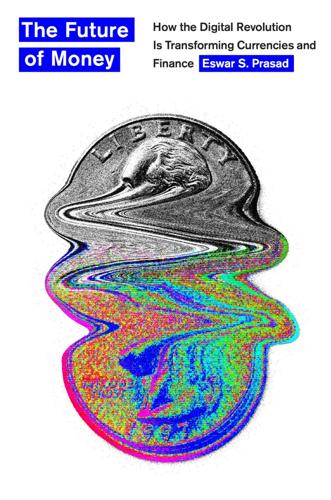
The Future of Money: How the Digital Revolution Is Transforming Currencies and Finance
by
Eswar S. Prasad
Published 27 Sep 2021
Your invested funds may quickly travel overseas without your knowledge. As a result, risks can be amplified, including the risk that market regulators, such as the SEC, may not be able to effectively pursue bad actors or recover funds.” The Next Frontier: Decentralized Finance The next frontier for cryptocurrency enthusiasts is the dream of decentralized finance (DeFi), or Open Finance, a model for providing a broad range of financial services—including credit, savings, and insurance—in a decentralized manner and someday making the services and products available to anyone anywhere in the world. DeFi is built on decentralized blockchains.
…
Financial LEGOs For a nontechnical exposition of permissionless composability as well as the specific financial product and the risks discussed in this section, see “DeFi’s Permissionless Composability is Supercharging Innovation,” Chainlink (blog), August 12, 2020, https://blog.chain.link/defis-permissionless-composability-is-supercharging-innovation/. See Sid Coelho-Prabhu, “A Beginner’s Guide to Decentralized Finance (DeFi),” Coinbase (blog), January 6, 2020, https://blog.coinbase.com/a-beginners-guide-to-decentralized-finance-defi-574c68ff43c4 for some definitions and examples. Also see Alyssa Hartig, “What Is DeFi?,” Coindesk, December 17, 2020, https://www.coindesk.com/what-is-defi. Drawbacks to Decentralization The paper by Ari Juels and coauthors is Daian et al. (2019).
…
But it is equally possible that the benefits of innovations in financial technologies will be captured largely by the wealthy as a result of disparities in financial literacy and digital access. Thus, the implications for income and wealth inequality—which have risen sharply in many countries, fomenting political and social tensions—are far from obvious. While new technologies hold out the promise of democratizing and decentralizing finance—eroding the advantages of larger institutions and countries and thereby leveling the playing field—they could just as well end up having the opposite effect. Consider network effects, the phenomenon that adoption of a technology or service by more people increases its value, causing even more people to use it and creating a feedback loop that makes it dominant and less vulnerable to competition (think Facebook and Google).
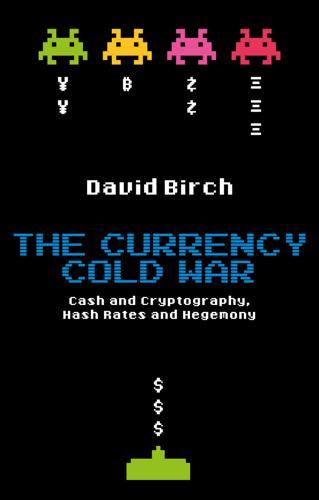
The Currency Cold War: Cash and Cryptography, Hash Rates and Hegemony
by
David G. W. Birch
Published 14 Apr 2020
Electronic Money Institutions, or ELMIs, who hold digital money as a liability on their balance sheets), there are instead new kinds of intermediaries that supply technical services along the value chain. We may do away with the old institutions, the BIS is saying, but we will replace them with new ones. Meet the new boss, as The Who say. Well, sing. This has indeed proved to be the case, with attempts to create a blockchain-based alternative financial system (generally known as the decentralized finance or ‘DeFi’ movement) finding it very difficult to scale (Krupps and Murphy 2019). DeFi start-ups are trying to build an interlocking financial system denominated in cryptocurrencies. They offer a wide array of lending and derivatives products, available globally, peer-to-peer and without any middlemen, but they have their own systemic risks.
…
Separating the creation of money from bank loans might mean a reduction in lending, which would have implications for the economy. There will also be consequences for banks regarding the supply of credit as well as the potential for new kinds of financial products to replace those loans. This takes us into the world of decentralized finance discussed earlier, which I am not framing as either good or bad here, because it is neither. In a European Parliament report, Fiedler et al. (2018) noted the implications of market participants shifting liquidity away from bank deposits to digital currencies, saying that the ‘current fractional reserve banking system would be challenged at its core’.
…
Glossary ACU: alternative currency unit AI: artificial intelligence AML: Anti-Money Laundering AMLDV: Anti-Money Laundering Directive API: application programming interface BIS: Bank for International Settlements BRI: Belt and Road Initiative (China) BSA: Bank Secrecy Act (United States) CBDC: central bank digital currency CDD: customer due diligence CDP: collateralized debt position CFA: Franc of the Financial Community of Africa CFSI: Centre for the Study of Financial Innovation CHIPS: Clearing House Interbank Payment System CPS: Crime Pays System CTF: counter-terrorist financing DCA: digital currency area DCEP: Digital Currency/Electronic Payment DeFi: decentralized finance ECB: European Central Bank ECU: European Currency Unit ELMI: Electronic Money Institution ESL: enterprise shared ledger FinCEN: Financial Crimes Enforcement Network FINMA: Financial Market Supervisory Authority ICO: initial coin offering IMF: International Monetary Fund IMFS: International Monetary and Financial System JPMC: JPMorgan Chase SHC: synthetic hegemonic currency HMRC: Her Majesty’s Revenue and Customs KYC: Know Your Customer KYZ: Known-bY-Zuck NFC: near-field communication NCSC: National Cyber Security Centre NIST: National Institute of Standards and Technology OFAC: Office of Foreign Assets Control PBoC: People’s Bank of China PEPSI: Pan-European Payment System Initiative PIN: personal identification number Pseudonym: a persistent alias to an identity PQC: post-quantum cryptography SDR: special drawing right SEC: Securities and Exchange Commission SGA (Saga): a partially collateralized stablecoin SHC: synthetic hegemonic currency Sibos: The annual SWIFT banking conference SIM: subscriber identification module, the chip inside a digital mobile phone that links the device to a user SMS: short message service (the GSM text message service) SWIFT: Society for Worldwide Interbank Financial Telecommunications USSD: Unstructured Supplementary Service Data Bibliography Adrian, T., and T.
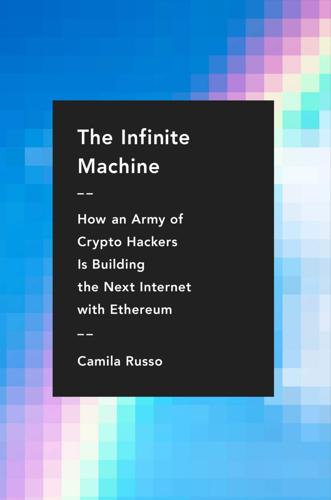
The Infinite Machine: How an Army of Crypto-Hackers Is Building the Next Internet With Ethereum
by
Camila Russo
Published 13 Jul 2020
While there are varying degrees of centralization, these platforms tend to be peer-to-peer apps that increase users’ control of their funds and their information, no third party is required to transact, and, outside of expensive sustained attacks such as more than 50 percent of miners colluding or spamming the network, third parties can’t censor or stop transactions, either. Because these apps run on the public Ethereum blockchain, it means the flow of funds is transparent and anyone can take the open source code and inspect it. They can even fork a project and modify it. The movement came to be known as “decentralized finance,” or DeFi, and also “open finance.” It was banking without banks.5 While ICOs had disrupted fundraising, open finance was arguably going even further. It’s not just about fundraising; it’s about the entire financial system. These projects were taking better advantage of the programmable nature of Ethereum, exploring how to re-create the more complex aspects of finance, like loans and derivatives, in a decentralized way.
…
In some ways it’s less convenient than getting credit without putting up any assets, but it also eliminated the need to provide any personal information or deal with any humans at all. The whole process is done automatically, in a few minutes, from anywhere. By early 2020, the amount of money being used as collateral to back loans and other transactions in decentralized finance crossed $1 billion, from just $10 million a year earlier. There was real value being transacted, and though it was mainly used to speculate, its advocates argued it was only early days and eventually a broader audience would also be shunning their banks and taking out loans in DeFi platforms.
…
“Two years ago people’s expectations were definitely getting far ahead of the reality,” he said. “Now on the one hand the hype is lower, and on the other hand the reality is better. And I think that’s good on both fronts. We’ve made a lot of progress.” Specifically, Ethereum developers have made progress on scalability, proof of stake, and decentralized finance and other applications, he said. Still, Ethereum was seldom seen in major news headlines anymore and crazed investors had moved on, which might have led an outsider to think the wild ride was over for the second-biggest crypto. To Vitalik the opposite was true. Ethereum was stronger than ever, and creating concrete value.

Number Go Up: Inside Crypto's Wild Rise and Staggering Fall
by
Zeke Faux
Published 11 Sep 2023
Gox, the first big crypto exchange, was hacked, of course. And the hacks didn’t stop after Bitfinex was robbed. Among the biggest: Coincheck was taken for $530 million in 2018 and KuCoin for about $250 million in 2020. In 2021, a total of $3.2 billion in cryptocurrency was stolen from exchanges and decentralized finance (or DeFi) apps, in which crypto traders make deals directly with one another. That’s a hundred times more than the total stolen in all bank robberies in an average year in the United States. Much of the money was taken by North Korea’s Lazarus hacker group. * * * — BACK IN 2015, Bitfinex had set up a new security system after it lost about $400,000 of cryptocurrencies in a hack.
…
Finance, 113–114 Creative Artists Agency (CAA), 155 Crypto Bahamas conference attendees, 131–134, 136, 165, 208 hosts, 127, 129–130 Scaramucci and, 129–130 sponsors, 136 topics, 127–128 Crypto Capital Bitfinex and, 61, 62 money laundering by, 62 relationship with Tether as subject of federal investigation, 68 cryptocurrencies. See also specific currencies anonymity of users, 18, 19 Celsius as bank for, 110, 118 commercial applications of, ICOs, 49 crash, 236–237 decentralized finance (DeFi) apps for, 102 development of, 18, 21, 147 drugs and, 19, 28 endorsers of, 89–90, 129, 131, 132 FBI and, 105–107, 109 first boom, 84 idea for, 18 importance of Tether in economy of, 135 laser eyes and, 22 legal footing of, in Bahamas, 77–78 money laundering and, 27, 37 regulation of, 87 run on, 161–163 traceability of, 98 cryptocurrency exchanges.
…
See also specific exchanges Bankman-Fried on solvency of (2022), 168 banks and, 52, 56–57 first big, 48, 102 hacking of, 101–103 importance of, 135 money laundering and, 21, 61 questionnaire sent to thirteen largest, by New York attorney general’s office, 60 security of, 101, 102, 103 CryptoDickButts, 166 CryptoPunks, 143 Cuban, Mark, 124 CumRocket, 15 Curry, Steph, 142 D “dacoinminster,” 34–36 The Daily Show, 107 dark pools, 59 Dash, Damon, 156 Dauphinot, Clarence, Jr., 67 David, Larry, 90, 131 Davies, Kyle, 166, 167 Davis, Noah, 143 Davis, Philip, 77–78, 130 decentralized finance (DeFi) apps, 102, 113–115, 117, 118 Degenerate Trash Pandas, 132 Delitzia, 40 Deltec Bank & Trust (Bahamas) under Chalopin, 67 as sponsor of Crypto Bahamas conference, 136 Tether and, 66, 67 Dentacoin, 114 Devasini, Giancarlo appearance of, 210 background, 41, 42, 44 Betts and, 57 on Bitcoin, 47 Bitcoins seized by FBI and, 109 blog posts by, 44–46 Bukele and, 199, 201 business ventures prior to Tether, 39, 40, 41–43, 47 career as plastic surgeon, 11, 40–41 Chalopin and, 67 as de facto CEO of Tether, 137 Faux’s article blasted by, 68–69 first cryptocurrency bubble and, 51 Keiser and Herbert and, 205, 210, 239 loan to FTX refused by, 231 on Madoff, 45 money transfers from Crypto Capital, 61, 62 percent of Tether owned by, 38, 239 Tether’s business model and, 58 Tether’s line of credit to Bitfinex and, 63 on Twitter, 68 “digital art.”
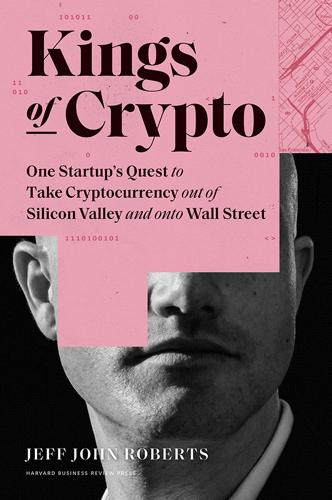
Kings of Crypto: One Startup's Quest to Take Cryptocurrency Out of Silicon Valley and Onto Wall Street
by
Jeff John Roberts
Published 15 Dec 2020
“There’s a lot of forces coming together in crypto—tech companies, banks, upstart financial companies, and authoritarian governments. It’s going to be a heck of a fight,” says Tapscott. Ironically, it’s possible that the winner of this fight will be none of these players. Instead, the prevailing force in crypto could be an emerging technology called DeFi—short for decentralized finance. In a DeFi world, bitcoin-like networks would offer financial services like loans or deposits run by smart contracts, all beyond the control of a company or government. DeFi isn’t just an idea—a number of projects are already up and running, and CZ, the cowboy CEO of Binance, has launched a decentralized exchange.
…
Gox and, 56–58 Ponzi schemes, 141–142 swindles, 141–145 threats of, 149–151 cryptocurrencies academic research on, 218–219 altcoins/shitcoins, 138 Binance and, 179–181 bubble around, 133–139 bubble in, 138–145, 149–155 bull run in, 201–203 celebrity endorsements of, 144–145 code for, 188–189 crash in, 160–161, 165–175 exchanges of, 127, 215–216 Libra, 205–207 as property versus currency, 122–126 swindles using, 141–145 See also individual currencies crypto winter, 170–175, 198, 201 Custody, 209 cypherpunks, 23, 99–100 CZ. See Zhao, Changpeng DAO (Decentralized Autonomous Organization), 90–93, 145–146, 169–170 dApps, 188 Davenport, Ben, 57 decentralized finance (DeFi), 217–218 Dentacoin, 138 Dewitt, Dorothy, 224 Digital Asset, 104, 105 Digital Gold (Popper), 23 Dimon, Jamie, 103, 138, 211–213 diversity, 225 Dixon, Chris, 69, 93, 124, 157, 216 Dogecoin, 54, 181–182 Dorman, Jeff, 105–106 Draper, Tim, 167 Dread Pirate Roberts, 31, 59, 122 Earn.com, 186–187 Ehrsam, Fred, 10–14 on Ethereum and smart contracts, 93–95 on the future, 220, 225–226 the hedger and, 174 Olaf hired by, 28–29 Electronic Frontier Foundation, 100 electronic market makers, 192 Elliott Wave Theory, 151 enterprise blockchain, 73 ether, 92–93 Ethereum, 84, 87–97 Binance and, 182 blockchain issues in, 202 flash crash of, 139–141 hard fork at, 91–93 market caps of, 203 popularity of, 134–139 value of, 152 Ethereum Classic, 196 Facebook, 63, 64 Project Libra, 205–207 Winklevoss twins and, 114–115 Farmer, David, 159, 175 Federal Bureau of Investigation, 59–60, 126–127 Federal Reserve, 12, 53, 212 Federal Reserve Bank of New York, 102 Fidelity, 209–210 Financial Crimes Enforcement Network, 126 Financial Times, 136–137 Finney, Hal, 23 flash crashes, 139–141 Forbes magazine, 148 Force, Carl Mark, IV, 59–60 Fortune magazine, 206 Founder’s Fund, 166–167 Freeman, Kristian, 153 Galaxy Digital, 172 Garlinghouse, Brad, 224 GDAX (Global Digital Asset Exchange), 96–97, 101–103 flash crash in, 139–141 professional traders and, 113–117 Gemini, 97, 105, 116–117 Gemini Dollar, 205 geo-fencing, 40 Gilmore, John, 100 Give Crypto, 175 Goldman Sachs, 11–12, 37, 104, 171, 212 on bitcoin, 225 Elliott Wave Theory at, 151 Google, 40, 64, 157, 195–196 Google Ventures, 204 Graham, Paul, 36 Grayscale, 54 Grayscale Bitcoin Trust, 208 Hacker News, 78 Hacking Team, 197 Hammell, Craig, 38, 64 on adding currencies, 181–182 on Hirji, 191 on infrastructure, 155–156 Hanyecz, Laszlo, 22 hard forks, 92, 147 Haun, Katie, 17–18, 20, 155, 225 as Coinbase ally, 49 cryptocurrency expertise of, 59–60 on prosecuting bitcoin, 24, 31 at Stanford, 107, 218 Hearn, Mike, 76 hedge funds, 96, 172 Heroku, 156 hijackers, 142–143 Hilton, Paris, 144–145 Hirji, Asiff, 157–158, 173–175, 209 on Binance, 183 departure of, 198–199 on Earn.com, 187 on the future of crypto, 216–217 Srinivasan and, 193–200 style and personality of, 190–193 Hirschman, Albert, 48, 185 “hockey stick growth,” 51–52 hodlers, 83–84 HoweyCoin, 168–169 IBM, 90, 216 ICOs (initial coin offerings), 135–138 Binance and, 179 HoweyCoin and, 168–170 SEC on, 145–146, 168–170 swindles around, 141–145 impulse wave pattern, 151 infrastructure, 75–84, 155–159, 209–210 insider trading, 160 Internal Revenue Service, 121–126, 173 Jobs, Steve, 7, 99, 109, 111 JPM Coin, 212 JPMorgan Chase, 103, 104, 138, 211 Karpelès, Mark, 55–58 Knight, Phil, 39 KodakCoin, 167 Kraken, 96–97, 114 Lamborghinis, 146–147, 167 Langschaedel, Julian, 39 Lawsky, Benjamin, 127 Lee, Bobby, 82 Lee, Charlie, 39–40, 54, 80–81, 88 in Beijing, 81–83 departure of from Coinbase, 117–118 on infrastructure, 156 Litecoin and, 223 on Mt.

On the Edge: The Art of Risking Everything
by
Nate Silver
Published 12 Aug 2024
GO TO NOTE REFERENCE IN TEXT to drop out: Pete Rizzo, “$100k Peter Thiel Fellowship Awarded to Ethereum’s Vitalik Buterin,” CoinDesk, June 5, 2014, coindesk.com/markets/2014/06/05/100k-peter-thiel-fellowship-awarded-to-ethereums-vitalik-buterin. GO TO NOTE REFERENCE IN TEXT or decentralized finance: “What Is DeFi? A Beginner’s Guide to Decentralized Finance,” Cointelegraph, cointelegraph.com/learn/defi-a-comprehensive-guide-to-decentralized-finance. GO TO NOTE REFERENCE IN TEXT decentralized autonomous organizations: “What Is DAO and How Do They Work?,” Simplilearn, August 12, 2022, simplilearn.com/what-is-dao-how-do-they-work-article. GO TO NOTE REFERENCE IN TEXT usually isn’t stored: “What Does ‘On-Chain’ Really Mean?
…
So he went all-in on crypto—with help from a $100,000 grant from Peter Thiel’s foundation in 2014 to drop out of school and further develop Ethereum. His bet has been a success. ETH is the second-most-traded cryptocurrency, behind BTC but way ahead of everything else. And although smart contracts are a relatively young invention, there are already some intriguing uses for them. Smart contracts are the basis of DeFi, or decentralized finance—although some DeFi projects so far have turned out to be scams. They are also the basis of DAOs, or decentralized autonomous organizations—self-governing structures that are sometimes used by teams of investors to buy crypto assets together. And then there’s the most famous use case for smart contracts: the non-fungible token, or NFT.
…
L., 124 Clinton, Hillary, 267 closing line value, 205–6, 206, 481 Coates, John, 89–91, 99, 102, 116, 125 cognitive bias, 481 Collison, Patrick, 262, 263, 466, 494 combo (poker), 481 community cards (board) (poker), 41, 480, 481 competitiveness, 25–26 abuse and, 118 game theory and, 52, 66 lack of money drive and, 243 poker and, 112, 118, 120, 243 resentment and, 223, 277–78 River-Village conflict and, 28–29 sports betting and, 173 venture capital and, 249 compute (AI), 481 computer applications sports betting and, 172 See also AI; solvers Computer Group, 195–96 Confidence Game, The (Konnikova), 123–24, 309 confidence interval, 481 confirmation bias, 28, 264, 481 conformity, 286–87, 288, 318, 330–31n Conrad, Joseph, 253 conscientious contrarians, 481 consensus, 481 consequentialism, 359, 481, 533n See also utilitarianism Constantin, Sarah, 24 contrarianism AI existential risk and, 414 conscientious, 481 finance and, 240–42 founders and, 403 politics and, 242, 254n Silicon Valley and, 25, 254, 414 Trump and, 150 venture capital and, 249, 284–87 See also anti-authority attitude; independence cooler (poker), 482 coordinated cards (poker), 482 Coplan, Shayne, 370 corpus (AI), 482 correlation, 482 Cotra, Ajeya, 443, 455, 457, 458 courage, 222–24 cover (sports betting), 482 COVID-19, 6–9 Boredom Markets Hypothesis, 310, 480 casinos and, 7–8, 10, 10 cryptocurrency and, 6, 310, 312–13 effective altruism and, 360, 534n expertise and, 271 prisoner’s dilemma and, 507–8n probabilistic thinking and, 16 quantification and, 348–50 raise-or-fold attitude and, 230–31, 521n risk-taking behavior and, 6–7, 8–9, 10, 10 River-Village conflict and, 28, 29 societal institutions and, 456–57 Cowen, Tyler, 374n, 378, 402, 489, 494 credit card roulette, 482 Cromwell’s Rule, 415–16, 482 cryptocurrency anonymity and, 325 Archipelago and, 22, 310 bacchanalian atmosphere and, 306–7 bubble in, 306–7, 307, 310, 311–18, 317 business model of, 308–9 COVID-19 and, 6, 310, 312–13 defined, 482 focal points and, 329 fraud and, 124, 308 game theory and, 316–18, 317, 327 gender and, 312 history of, 322–24, 326 HODL, 308, 309, 310, 312, 317, 318, 487 meme creation of value and, 315–16 moral hazard and, 261 naïvete and, 310–11 poker and, 109 as Ponzi scheme, 309, 337 profitability for early adopters, 310 skill and, 308 See also Bankman-Fried, Sam; NFTs CryptoPunks, 311, 312, 325, 330, 332–33, 482 Cuban, Mark, 225 Cuban Missile Crisis, 424 cults of personality, 31, 338–39 culture wars, 29, 272–73, 341n, 377 D Damore, James, 273 DAOs (decentralized autonomous organizations), 307, 325 data science, 482 David, Larry, 313 Davidow, Matthew, 134–35 dealer (poker), 482 dealflow (venture capital), 482 decadence, 466 decels, 477 decentralized finance (DeFi), 324–25 deception, 58–59, 60, 63, 100, 206–7, 482 deception value, 60, 482 decision science, 427–28 decoupling, 24–25, 26, 27, 352, 482, 505n deductive reasoning, 482 Deeb, Shaun, 95 Deep Blue, 60 defect (game theory), 482 degens (gambling), 9, 114, 278–79, 482 Demis Hassabis, 416 Denton, Nick, 249–50n, 274 deontology, 359, 368, 481, 482 Designing Casinos to Dominate the Competition (Friedman), 162–63 determinism, 253–55, 264, 297, 482 deterrence, 483 See also mutually assured destruction DFS (Daily Fantasy Sports), 198, 199, 483 diminishing returns, 483 directionally correct, 483 Dirty Diaper (poker), 74–75, 483 discount rate, 483 disruptiveness, 257–58, 269–70 domain knowledge, 483 dominant strategies, 54–55, 483 DonBest, 483 donkbet (poker), 483 doomers, 483 See also AI existential risk doomsday machines, 425, 483 double down (blackjack), 483 Douthat, Ross, 466 Downriver, 21–22, 374, 483 See also casinos drawing dead, 483 Dresher, Melvin, 52, 494 drowning child parable, 357, 358, 359, 368, 483 Dr.

The Quiet Coup: Neoliberalism and the Looting of America
by
Mehrsa Baradaran
Published 7 May 2024
Using his gains and his knowledge, in 2019 Bankman-Fried created FTX, a platform where other traders like him could speculate in crypto markets and mine for more yield. Before its spectacular collapse in November 2022, FTX was the epitome of the venture- and crypto-captialists’ dream of the future of money: decentralized finance (DeFi). In the world of DeFi, counterparties trade derivatives contracts—the same weapons of mass destruction that blew up during the financial crisis—but for cryptocurrencies. Much like the financiers of the early to mid-aughts, DeFi platform founders assure investors that it is nearly impossible to lose money in cryptotrading because of the “advanced statistical models” created by quants to slice and dice cryptoassets into various securities, including—yes—mortgage-backed cryptoassets.15 The types of trades on FTX ran the gamut: price speculation on cryptotokens, NFTs, and derivatives of NFTs, as well as variations on sports betting and speculation in the prediction markets.
…
See also transnational corporations corruption, xvi–xviii, xxiv, xxxiv, 99, 109, 110, 193, 220, 248, 289, 301, 336, 340, 351, 354–56, 358, 359, 362, 363 cost-benefit analysis (CBA), 236 Council of Economic Advisers, 303–4 Council on Economic Affairs, 28 Countrywide, 285 coups, political, 61 Courage to Act, The (Bernanke), 289 coverture, xxix, 173 COVID-19 pandemic, 178, 214, 329–30, 350, 354–55 Cox, Archibald, 109 creativity, 344, 363 credibility revolution, 167 credit, 17, 201–4, 215, 246 credit cards, 206–8 credit scores, 216 Credit Suisse, 214 credit unions, 198–200 Crenshaw, Gordon, 86 criminal lending syndicates, 213 critical legal theory, 139 critical race theory, xxiii cruel and unusual punishment, 102 cryptocurrency, 326, 327, 330–45 Cuba, 42 “cultural Marxism,” xxiii Cultural Revolution, 39 “culture war,” 8 currency exchange rates, 58 dark money, xxiii–xxiv, 114, 149 Dartmouth University, 214 Darwinian economics, 178 Darwinian science, xxix data (data privacy), 108, 146, 321 Dawkins, Richard, xxviii debt amnesty (debt jubilees), 243–45 debt contracts, 196, 202, 212, 243–45, 250, 262, 265, 278, 280 Debt Diet program, 217 decentralized autonomous organization (DAO), 336–38, 341 decentralized finance (DeFi), 343 Declaration of Independence, 42 “Declaration on the Granting of Independence to Colonial Countries and People,” 49 decolonization, 38–39, 41, 43–44, 58, 68 “deep state,” 230 Defence of Usury (Smith), 199 Defense, Department of, 236 defense contractors (defense spending), 75, 229 deficit spending, 298–99 deindustrialization, xvii de jure segregation, 120, 122 Delaware, 81, 175, 208, 300 Delaware Chancery Courts, 81, 82, 85, 175 demand deposits, 250 democracy, xxii, xxxii, xxxv, 50–52, 54, 59, 62, 68, 70–71, 87, 95, 99, 113–15, 140, 145, 154, 191, 194, 220–23, 225–26, 231, 245, 248, 258, 266–67, 273, 281, 288, 317, 328, 336–41, 349, 352–54, 356, 358, 360, 364 Democratic Party, xiv, xl, 27, 74, 140, 189, 287, 299, 315, 319, 358 democratic socialism, 128 Denver, Colo., 119 deposit insurance, 255 Depository Institutions Deregulation and Monetary Control Act (1980), 258 deposit slips, 250 deregulation, 67, 128, 207, 229–31, 237–38, 241, 257, 258, 267, 268, 276–77, 292, 296–97, 315, 316, 323 derivatives (derivatives contracts), 241, 262–66, 275, 293, 303, 316 desegregation, 10, 22, 104, 119, 120, 144.

Digital Gold: Bitcoin and the Inside Story of the Misfits and Millionaires Trying to Reinvent Money
by
Nathaniel Popper
Published 18 May 2015
Many bankers had begun to understand what Gavin Andresen had seen back in 2010 when he first became entranced by the idea of a financial network with no single point of failure. For banks that were terrified of cyber attacks, the idea of a payment network that could keep running even if one player, or one set of servers, got taken out was incredibly attractive. More broadly, the banks were waking up to several increasingly viable efforts to decentralize finance and take business that had belonged to the big banks. Crowdfunding companies like Kickstarter, and peer-to-peer lending services like Lending Club, were trying to directly connect borrowers and savers, so that a bank was not necessary. The blockchain seemed to present a decentralized alternative to an even more basic part of the banking industry’s business—payments.

The Metaverse: And How It Will Revolutionize Everything
by
Matthew Ball
Published 18 Jul 2022
Many donations remain in the DAO because the cost to retrieve a contribution exceeds its value. (Many of these problems are attributed to sloppy smart contract coding and could have been avoided, especially if another blockchain or Layer 2 solution had been used.) Though a member of “traditional finance” was able to outmaneuver the “decentralized finance” community for the US Constitution, the world of high finance is also using DAOs to make their investments. One such example is the Komorebi Collective, which makes venture investments into “exceptional female and nonbinary crypto founders,” and includes among its members a number of high-profile venture capitalists, technology executives, journalists, and human rights workers.

The Mysterious Mr. Nakamoto: A Fifteen-Year Quest to Unmask the Secret Genius Behind Crypto
by
Benjamin Wallace
Published 18 Mar 2025
“Why does everyone I ask this question respond with another question?” On the plane to Florida, I’d sat between a guy who worked in digital assets for Bank of America and a guy who made loans to bitcoin miners. Both called stolid old Bitcoin “boring” compared with the churn and dynamism of newer crypto projects. Experiments with DeFi (decentralized finance) and NFTs (nonfungible tokens) and DAOs (decentralized autonomous organizations) were happening on other blockchains, Ethereum in particular. But being boring had also made Bitcoin the cryptocurrency most likely to get mainstream adoption. In Miami, Wyoming senator Cynthia Lummis was scheduled to do a “fireside chat” on Bitcoin legislation, and Tucker Carlson would be at the convention center with a crew from Fox to interview Michael Saylor, whose company MicroStrategy held more than $5 billion worth of bitcoin.

The Unwinding: An Inner History of the New America
by
George Packer
Published 4 Mar 2014
The summer he met Max Levchin, Thiel read a book published the previous year, The Sovereign Individual by Lord William Rees-Mogg and James Dale Davidson. It described a coming world in which the computer revolution would erode the authority of nation-states, the loyalty of their citizens, and the hierarchies of traditional professions, empower individuals through globalized cybercommerce, decentralize finance by moving it online with electronic money, and bury welfare-state democracies, while accelerating inequalities of wealth (which, in the madcap late nineties, seemed almost inconceivable). At the same time, local mafias would have wide latitude to inflict random violence. The book sketched out a libertarian apocalypse, a dream with dark edges, and it was part of the inspiration for PayPal.